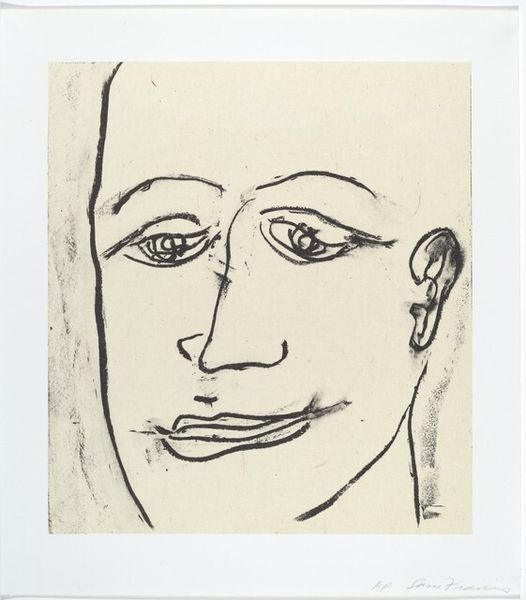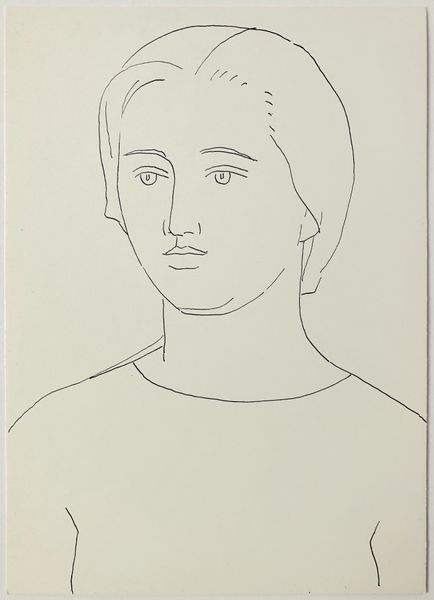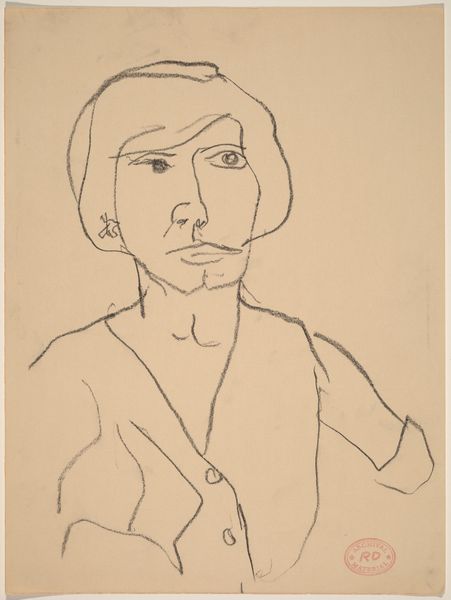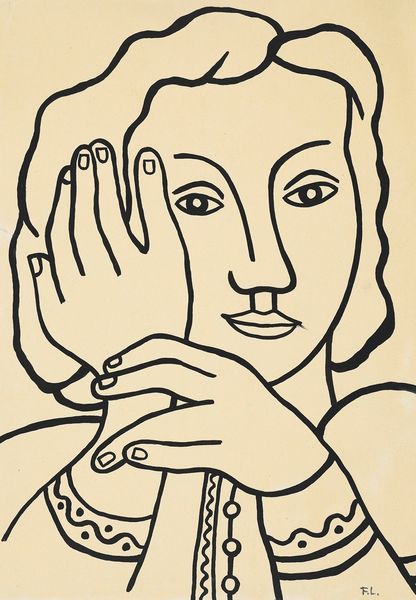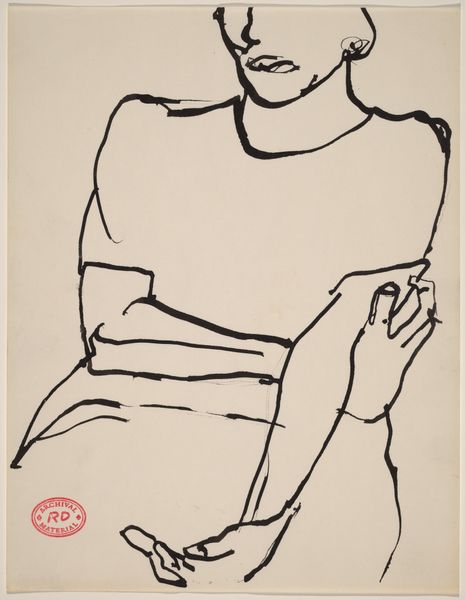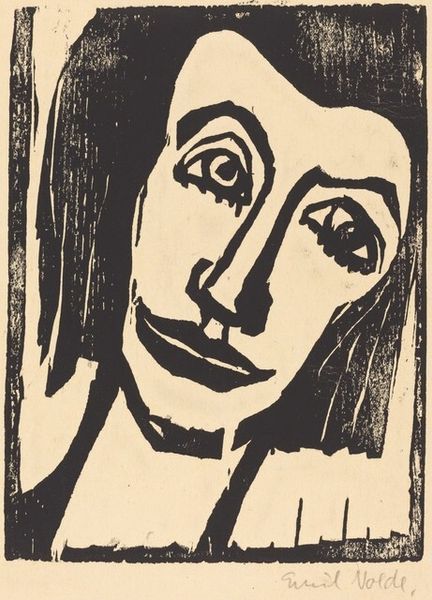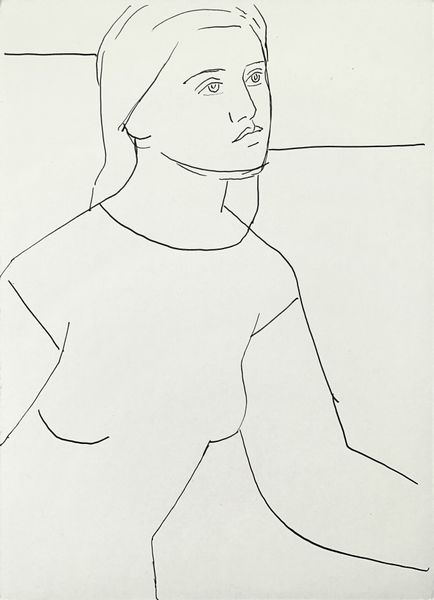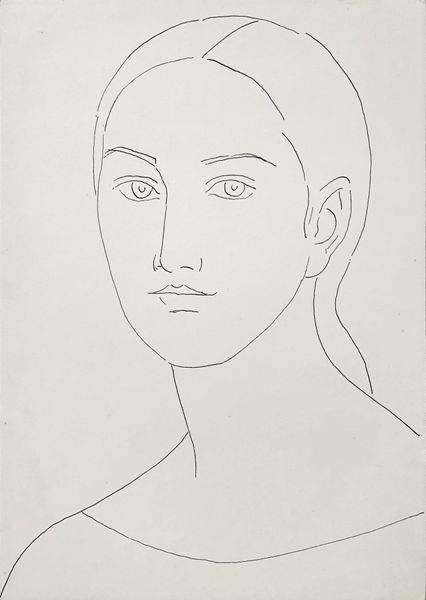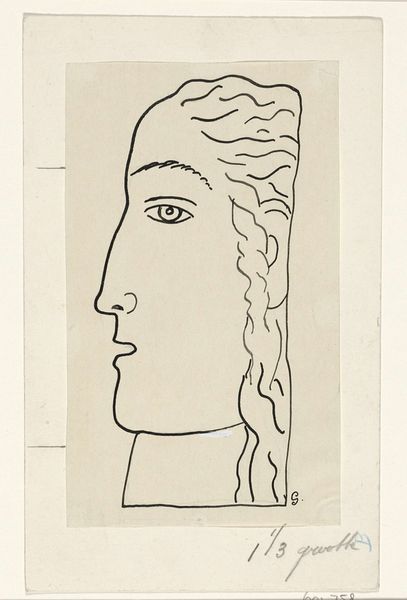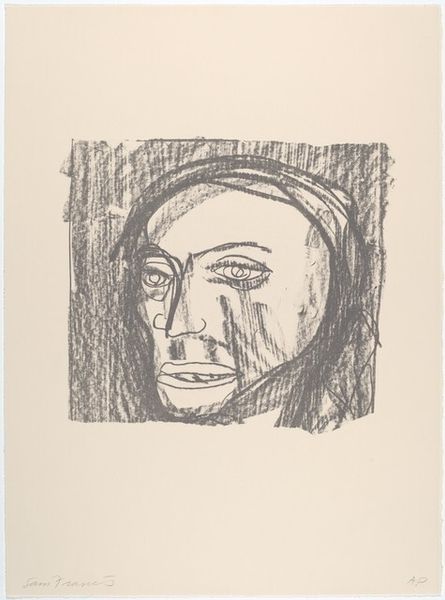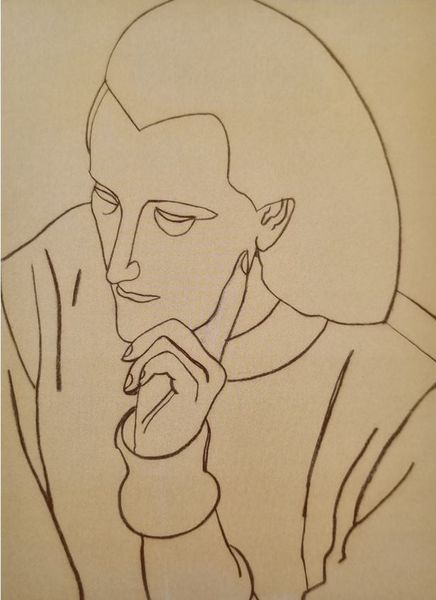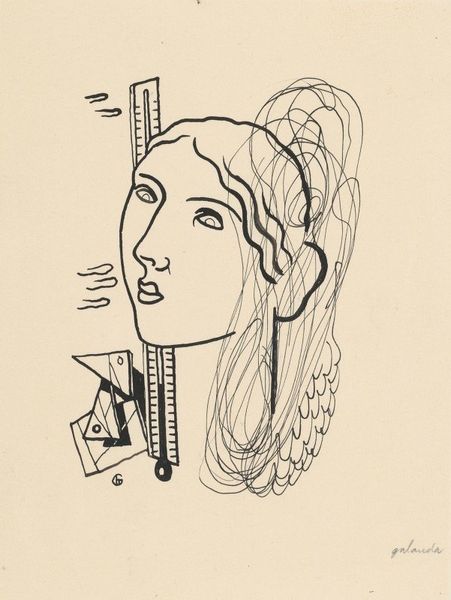
drawing, ink
#
portrait
#
drawing
#
cubism
#
pen illustration
#
caricature
#
figuration
#
form
#
ink
#
abstraction
#
line
#
modernism
#
calligraphy
Dimensions: 51.5 x 66 cm
Copyright: Fernand Leger,Fair Use
Editor: Here we have Fernand Léger's "Portrait of Nadia," likely an ink drawing. It's strikingly simple, almost like a caricature, but there's something very powerful in its directness. What's your take on this piece? Curator: It’s a fascinating example of Léger’s engagement with modernism and his drive towards simplifying form. He strips the portrait down to its essential lines, echoing the industrial aesthetic that so influenced his work. Think about the context: post-World War I, artists were grappling with representing a fractured world. Editor: So, the simplification is a reflection of the times? Curator: Absolutely. And it challenges traditional portraiture. It’s less about individual likeness and more about representing the *idea* of a person. Consider how the stark lines and the almost mechanical depiction might be a comment on the increasing mechanization of society. Where does Nadia fit into this new social structure? Is Léger imbuing her with a new identity or removing her from a romantic past? Editor: That’s a very interesting reading. It makes me reconsider the geometric shapes in the necklace. It felt decorative, but I see now how they echo the mechanization you mention. Curator: The personal becomes something more symbolic. Léger isn't just drawing Nadia; he’s drawing modern society’s impact on the individual, how she fits into and responds to the radical cultural change. What does she stand for in a new world order? Editor: It really shifts my perspective on it. Before, I just saw a stylized portrait, but now I see a commentary on a changing world. Curator: Precisely! And understanding that shift is key to understanding the social and cultural context of Léger's work and its reception at the time.
Comments
No comments
Be the first to comment and join the conversation on the ultimate creative platform.
